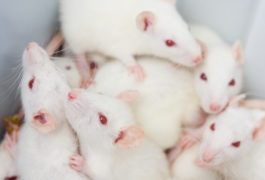Chromatin remodeling tied to altered splicing in autism model
Exposing neurons to valproic acid, a well-known environmental risk factor for autism, disrupts their ability to generate different proteins from the same gene.

Exposing neurons to valproic acid, a well-known environmental risk factor for autism, disrupts their ability to generate different proteins from the same gene.

Prenatal exposure to topiramate increases a child’s autism odds, according to the study that prompted the inquiry, but experts caution that pregnant people with epilepsy have few other options for controlling seizures.

The brains of rats exposed in utero to the seizure drug valproate show a significant increase in brain size around the time of birth.

Autism is predominantly genetic in origin, but a growing list of prenatal exposures for mother and baby may sway the odds.

A partial ban in Europe on the use of a drug called valproate during pregnancy could deny women effective treatment for serious conditions.

Exposing fertilized chicken eggs to valproic acid, an epilepsy drug, yields chicks with apparent social deficits.
A journal covering autism in adulthood makes its debut, researchers call for an ethical framework for human organoid studies, and the association between acetaminophen and autism risk comes under scrutiny.
Despite social media rumors, a British children’s television show does not cause autism; childhood anesthesia is not tied to autism risk; and an adult on the spectrum reaches a haunting milestone

Nongenetic rodent models most relevant to autism tend to be those exposed to environmental agents in the womb or shortly after birth.

Problems with social interactions stem from faulty wiring of a single circuit spanning distant brain regions, results from three mouse models of autism suggest.